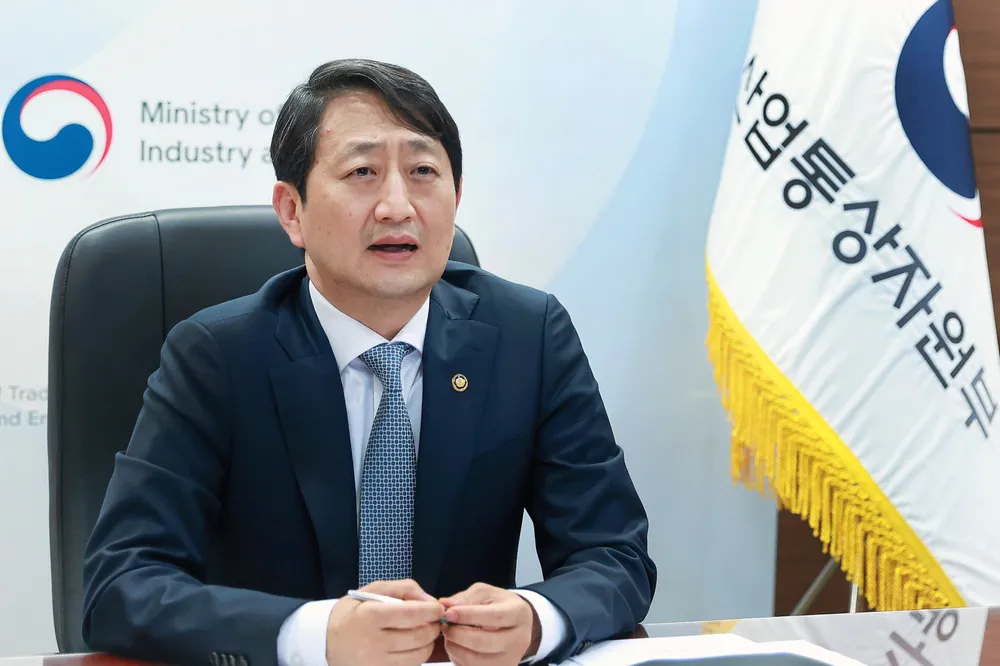Floating price ceiling set at same level as fixed in debut South Korean offshore wind tender
A decision to reserve 500MW of capacity for floating offshore wind had raised expectations about stronger price incentives

South Korea has launched offtake tenders for 1GW of fixed-bottom offshore wind power and 500MW of floating, but surprised some in the sector by setting the same price ceiling for both categories.
Details of South Korea's first offshore wind tender to reserve capacity for floating technologies were welcomed by the sector, but there was some disappointment that the ceiling price at KRW176,565 ($128) per MWh was the same as for fixed-bottom.
An additional 300MW of capacity has been reserved for onshore wind, with a price ceiling of KRW165,143/MWh.
“Finally, the announcement for South Korea's 2024 wind fixed-price contract competitive bidding, including the first floating offshore wind, has been released. Unfortunately, the ceiling price… is the same for both fixed and floating types, making the competitiveness of the floating LCOE the key factor,” wrote Cutty Kim, a director of Korean energy consultancy firm JNK Energy on his LinkedIn post.
Offshore wind developers have been waiting to see more details of what South Korea is planning for its first offshore wind tender since unveiling a competitive bidding roadmap that included plans to tender 7-8GW of capacity over a two-year period.
The roadmap also made it clear that the government was moving to strengthen non-price criteria in the next renewables auctions. This was seen as a response to concerns that a system weighted toward competitive pricing could expose Korea's new offshore wind supply chain to fierce competition prematurely, and scupper plans to build up a world-class sector.
South Korea's broader objectives for renewable energy include installing 14.3GW of offshore wind capacity by 2030, but successive governments have made it clear that they do not want to pursue such targets in a way that will outpace domestic capacity.
Two-stage process
Announcing measures to "improve competitive bidding for wind and solar power in a way that strengthens the supply chain and security", trade and industry minister Ahn Deok-geun confirmed that South Korea will adopt a two-stage process for bidding, as had been signalled.
A first round of evaluation will assess the non-price attributes and the second round will stage a price competition.
As signalled in the roadmap, the weighting of non-price criteria has been raised to 50%, from 40% previously, and new evaluation categories like maintenance, security and public works added, diminishing the relative weighting of community consent.
Scores from the two stages will be added up to select winners.
The price ceiling was based on an assessment of levelised costs of energy generation trends, including reference to overseas cases, according to Korea’s Ministry of Trade, Industry and Energy (MOTIE).
The overall ceiling for offshore wind power was increased from last year's KRW167,778 won/MWh for offshore wind, but was lowered for onshore.
No new incentives
This relative increase in the ceiling for offshore wind will not dispel disappointment among floating wind developers, after the decision to create a separate bidding process had raised expectations about a higher ceiling, or some other incentives.
This is because floating wind is seen as a relatively immature sector that will struggle to compete with fixed-bottom on a level playing field until it scales up significantly.
"The government’s fixed-price bidding system aims to stabilise revenue for renewable energy developers, reducing volatility and enhancing the economic feasibility of high-cost projects like floating offshore wind. However, applying the same price ceiling to both fixed-bottom and floating offshore wind projects fails to consider the unique technical complexities and elevated cost structure associated with floating technology," wrote Kim, in an online commentary.
Floating wind has enjoyed some advantages in the early stages of offshore wind development in Korea, under a system of Higher Renewable Energy Certificate (REC) multipliers, which include incentives to go into deeper waters.
But Kim argued that the latest decision neglects to take account of the "greater technical demands and substantial capital investment" required for floating decision.
"The recent decision overlooks these factors, undervaluing the economic benefits of floating offshore wind and failing to acknowledge the disparity in the LCOE between fixed-bottom and floating systems. This is an unfortunate misstep in policy," he wrote.
'Fascinating'
Although the ceiling price looks challenging, Peter Lloyd‑Williams, a senior analyst at energy intelligence firm Westward Global Energy, argued that it is too early to say if floating wind will or will not be competitive in the Korean tender, given that designs and costs are "far from standardised around the world".
"The Korean ceiling price sits somewhere between the $94.20/MWh awarded to the French floating project Pennavel in May – which was widely regarded as ambitious – and the $195.50/MWh (in 2024 price) set for Green Volt off the UK in AR6 last month. It’s also some way below the ceiling price of $200/MWh for floating wind set in Italy’s new FER 2 decree," he noted.
The announcement is unlikely to dim overall excitement about Korea, given market fundamentals in a nation that has already taken strategic choices that leave few alternatives to developing its offshore wind resources.
"It will be fascinating to see how the industry the responds. South Korea is now considered one of the world’s leading floating wind markets and announced a revamped auction roadmap in Autumn, so sentiment is generally positive, although long-awaited reforms to the permitting and leasing system have yet to be finalised," Lloyd-Williams said.
"However, it would not be the first time that a supportive government has underpriced an offtake auction and seen a more moderate response from industry than could have been generated," he warned.
(Copyright)